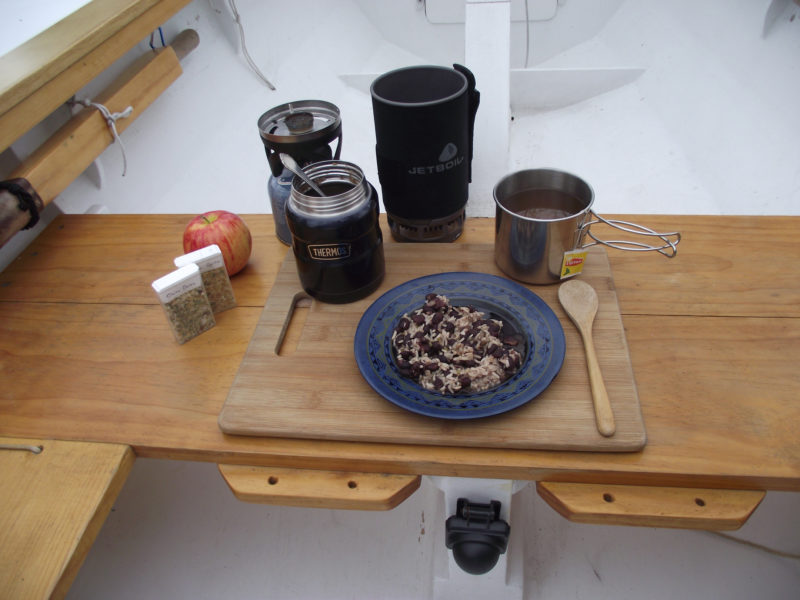 Tom Pamperin
Tom PamperinWith a small wide-mouth thermos, water boiled in the morning will have a hot cooked meal for you for lunch or dinner.
When I’m out cruising I’m generally too lazy to do anything fancy to feed myself. I rarely bothered with hot meals at all. When I did fire up my cruising cook set, a single-burner backpacking stove, the lack of an effective low setting made real cooking impossible anyway. Boiling water, yes. Simmering, no. Then I discovered thermos cooking. It’s so simple that I now regularly cook hot meals when I’m cruising.
To try it you’ll need a wide-mouth insulated food jar or vacuum bottle; Thermos, Stanley, and Hydroflask offer good choices. Get one that is lined with steel rather than glass—steel retains heat better. A 16-oz thermos will cook a large entrée for one person. For bigger meals, you’ll need a larger bottle, or even more than one.
Boiling-hot water does the cooking; a pot and a compact stove or a small campfire will do the job. Thermos cooking uses very little fuel—a single 8.5-oz pressurized propane/isobutene fuel canister provided 18 days of hot meals on my last solo cruise.
Pre-packaged meals from the supermarket like pasta and rice-based dishes work well, as do bulk grains or dry soup mixes—anything prepared by boiling in water. Oatmeal, steel-cut oats, couscous, and quinoa are standard fare on my boat because they’re cheap, wholesome, and keep well. By themselves, bulk grains don’t have much flavor, so you’ll want to carry spices and other ingredients to make them more interesting. There are plenty of recipes for thermos cooking on the web. A funnel with a wide stem comes in handy when pouring the dry mix into the thermos. You’ll lose less heat and avoid getting bits of food in your bilge or scattered around your campsite.
Preheat your thermos by filling it with boiling water, then seal it up and set it aside. This step is important—your thermos should be hot before you begin cooking. While your thermos is preheating, prepare your dry ingredients so you’ll be able to add them quickly to minimize heat loss. Check your recipe to see how much water to add. Start your stove again and boil that amount—this is the water your food will actually cook in.
Once the cooking water is boiling, open your thermos and pour out the water you used for preheating. This water will still be fairly hot; I often use it for a cup of tea or hot chocolate. Quickly add the dry ingredients and the boiling water, and reseal your thermos.
Gently roll your thermos around to mix the ingredients, then lay it on its side: Your meal will heat more evenly on the horizontal. Set it aside to cook. In cooler weather, wrap your thermos in a towel or space blanket for extra insulation. If you’re especially ambitious, give it an occasional roll.
Three to eight hours later—depending on what you’re cooking—you’ll have a hot, fully cooked lunch or dinner waiting. Not sure your rice or pasta is done? Give your thermos a shake. If you don’t hear water sloshing around, it’s ready. If you’re still not sure, go ahead and check: A quick look or two won’t do any harm. And don’t worry about overcooking—once your meal is ready, you can leave it in the thermos all day or night. It’ll still be warm and ready to eat when you get to it.
With thermos cooking, it’s easy to wake up to a hot breakfast—it’s about the only way I get breakfast in bed—or sit down to a hot supper immediately after tossing out an anchor for the night, with no need to dig through your gear to find your stove and supplies. I especially appreciate a ready-to-eat hot meal for those late-night arrivals.![]()
Tom Pamperin writes regularly for WoodenBoat. His first book, Jagular Goes Everywhere: (mis)Adventures in a $300 Sailboat has just been published. His article on cruising Lake Nipigon appears in this issue of Small Boats Monthly.
You can share your tricks of the trade with other Small Boats Monthly readers by sending us an email.
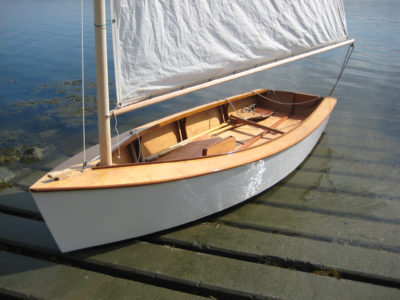
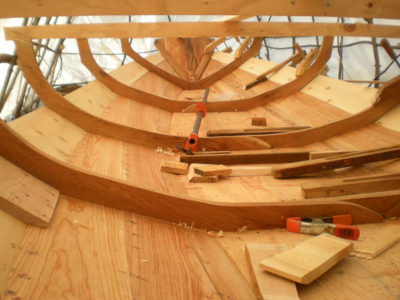
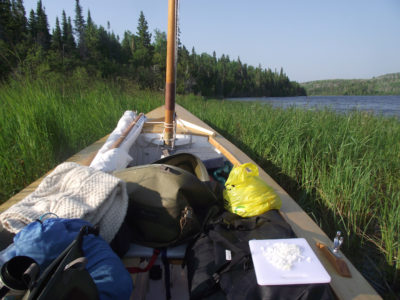


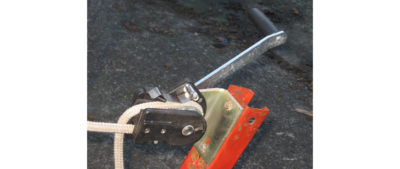
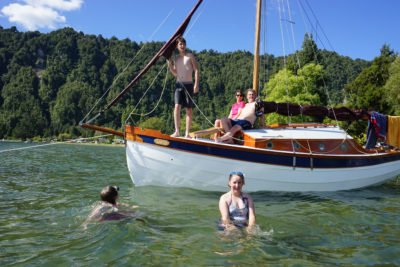
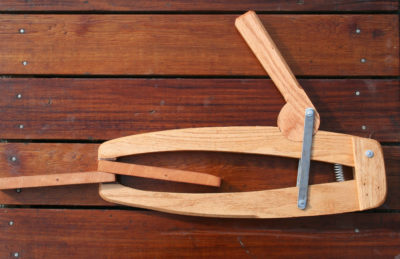
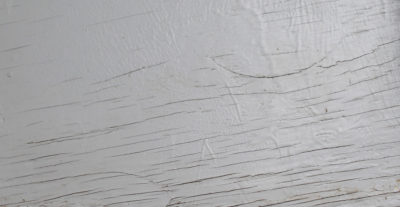

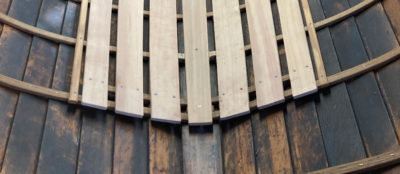
The February issue resurrected an old and nearly forgotten memory of Thermos-bottle cooking. It has been a long time since I have messed with the technique. Reading the article made me head for my gear room and I returned with a box of five stainless-steel Thermoses of various brands from 16-oz clear up to 64-oz. I have a one quart wide-mouth thermos I purchased several years ago with an Eddie Bauer label on it. I filled it with boiling hot water last night before bed and the following afternoon it was still hot enough to be called hot and not warm. In my experience, things will stay hot a long time in the good bottles until you open them to get at the contents, then they begin to cool off more rapidly. But the system to cooking in a thermos bottle does work. For the really tough jobs that ordinarily take a lot of cooking time I have always used a small aluminum pressure cooker. I’m enjoying this new magazine.
This is neat. A couple of times last summer I settled on anchorages when it was just too dark to do anything but find the sleeping bag. I was miffed about going to sleep without dinner. This idea could fix that.
I have used thermos bottles of and on for 50 years. Lately I’ve rediscovered the Thermos brand bottles that are now all stainless steel. The performance is better than ever and there is no glass to break. A 24-oz bottle starting with preheating and boiling water to fill as described in the article is still at 135 degrees 24 hours later if still full. I’m guessing here, but I think they have developed a high-production-rate electron-beam welding process to seal vacuum in between the inner and outer shells reliably. It isn’t an iPhone, just another bit of high technology improving the world of simple food-handling gear. I’m hoping here they have extended that manufacturing process to wide-mouth containers.
I agree, for small boats, thermoses kill several birds with one stone. Cooking in the evening has some advantages too: You can get an early start to catch a shifting tide with a warm breakfast and hot coffee. The leftover water used to preheat can go into a water bottle and keep your sleeping bag warm. Wrap it in spare clothing if it’s too hot. You can’t believe how nice this is. Not wanting to waste water, I drink it throughout the following day. And for the winter day-sailing crowd, hot soup or bouillon made in the morning at home warms the soul in the afternoon when the salty water is the only thing keeping the ice away.